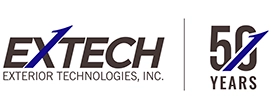A: Systems are thermally broken by placing a non-conductive material between aluminum, essentially providing a split between the inside and the outside walls. Thermal breaks reduce energy transfer, keeping unwanted external heat or cold out.
A: Rafters frame a roofing system, parallel to the slope of the roof. They run from the ridge of the roof to the exterior walls.
A purlin is a horizontal roof support that runs perpendicular to the slope of the roof.
Girt refers to the horizontal structural support member in a framed wall system.
A: Heat gain is the amount of thermal energy a space receives from the sun. Heat from within a structure that escapes through windows, doors, or other fenestration is called heat loss. Solar heat gain coefficient (SHGC) is used in daylighting to calculate the amount of energy transmitted, or shading ability of the window. The lower the SHGC, the better shading ability.
A: Polycarbonate sheets are available in many different shades, with the most popular being clear, opal, blue, and bronze. Exact shades can be specified to match brand colors.
A: We offer anodized and baked enamel architectural coatings on our framing systems. They can be specified in a wide range of colors.
A: Use a mild household detergent with a soft rag or sponge. Never use abrasive cleaning agents or glass window cleaners. Do not scratch or scrape. Pressure wash may be used to remove debris using the mist setting. Always test a small area first.
A: Multiwall polycarbonate is characterized by rectangular structures that run the length of the sheet, known as 'flutes'. The structure creates a thermal barrier and provide extra strength for long spanning capabilities.
A: Vertical installation allows moisture to flow properly through the system as it is designed to.
A: The flutes may be cleaned with a vacuum or with compressed air. Once installed, they should not require cleaning.
A: The film is for protection from potential scratching or damage during transportation and installation. Do not remove prior to cutting. The masking film indicates the UV-protected side and provides protection during installation.
A: An iodine test can be performed. Put a few drops of iodine on one side of the sheet and wipe it off. If the iodine can be wiped off easily, that is the UV-side. Iodine will stick to the side of the sheet that is not UV protected.
Note: it is important to only use recommended cleaners after performing this test to avoid potential damage to the panels.
A: Our systems are gasketed and fully weeped; they do not require additional water proofing. Avoid inadvertently blocking the weep holes during installation.
A: It is recommended to use 100% silicone sealant.
A: No, polycarbonate panels are highly flexible and may be formed to a radius. The panel thickness will impact the extent of radius bending.
A: In practice, practical applications are:
3440 vertical wall – 50’ high x infinite length,
5300 industrial window – 8’ high x 150’long,
3700 skylight – 20’ w x infinite length
A: No. Polycarbonate doesn’t yellow with age, just with exposure to UV from the sun. It is prevented by co-extruding panels with a layer of UV inhibitor. This outer layer of protection blocks the UV wavelength, and stops it on the outside of the sheet.
